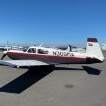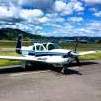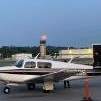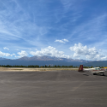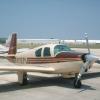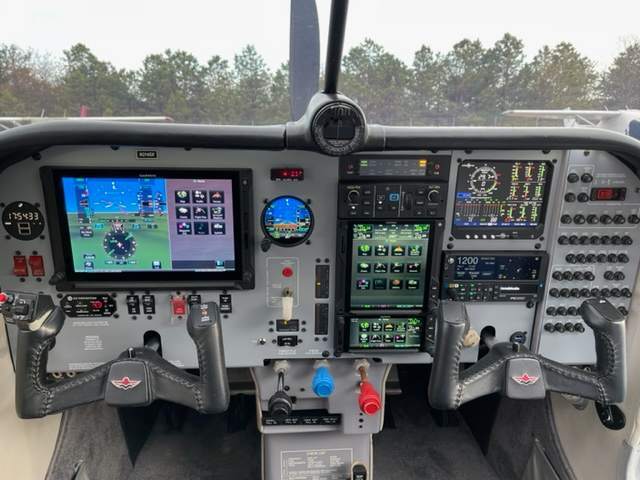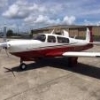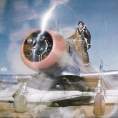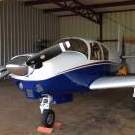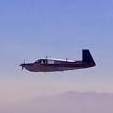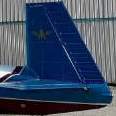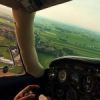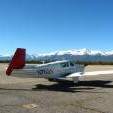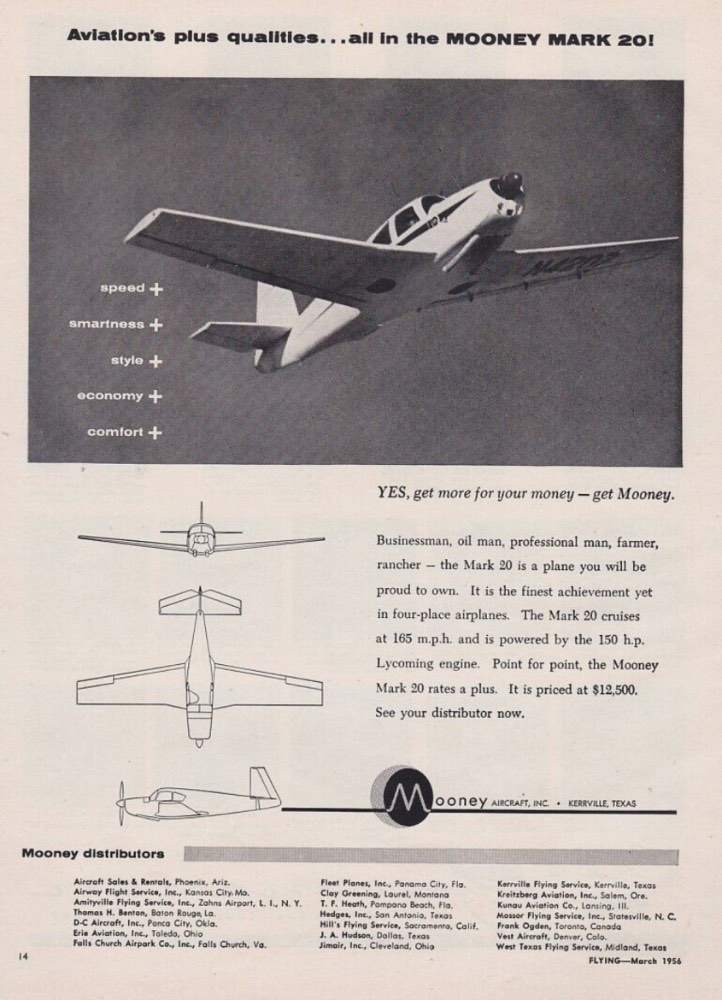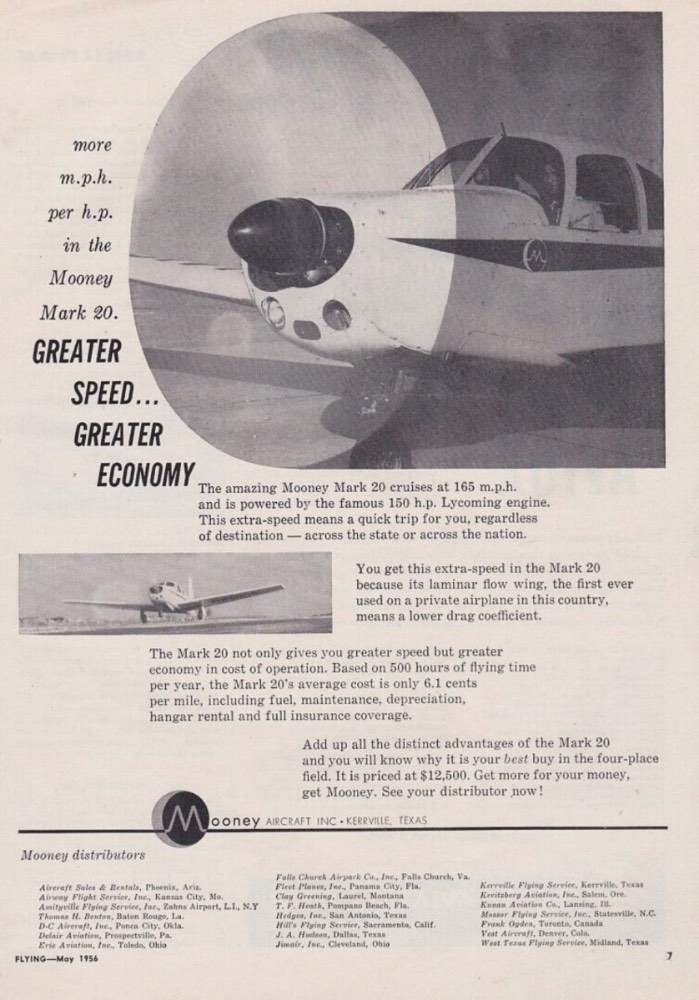Leaderboard
Popular Content
Showing content with the highest reputation on 09/09/2024 in all areas
-
I had folded up my canopy cover before leaving and it was a little damp with dew so I took it out at home and laid it out to dry...There were crickets! jeez!3 points
-
I think the horse died on page one of this topic. If not for sure by page two and I definitely didn’t see any movement by page three, for sure no breathing by page four, no pulse by page five, flies and rotting smell by page six. Only bones now on page seven.3 points
-
I recently did some fiberglass repairs to my top cowl. I added several layers of fiberglass cloth to strengthen the area around the "bump" on top the cowl which always cracks. Mine had a lot of cracks and the fiberglass was "flexible" aka broken in spots. I went with fiberglass for 2 reasons; 1 I had it on hand, and 2 I figure the rest of the cowl is fiberglass and has held up for nearly 50 years, so why reinvent the wheel. They just made it a little bit too thin on top, which a couple extra layers will fix. I have done fiberglass repairs before and my experience is over a large area with curves (like a cowl) it's hard to get the cloth to both lay flat AND get all the excess epoxy out. (can usually do one or the other but not both). As others have said, more is not better when it comes to the amount of epoxy in the fabric. So for those reasons I chose to buy the stuff to vacuum bag it - it was not expensive but I had some of the stuff on hand. I'll give you a quick list in case you want to do the same: Vacuum pump & AC gauge/manifold. I had this already from doing car AC systems but you can buy for a couple hundred or rent from autozone for free. These don't pump a lot of volume but I was able to get a roughly 24" x 20" area sealed up enough to pull plenty of vacuum. If you did a much larger area it might be harder to seal all that and you'd need a bigger capacity pump. 1/4" air hose and adapter to go from 1/4 NPT to 1/4 flare to adapt to gauge manifold, you can get these at local HW store. I got the hose from harbor freight. Vacuum film: https://www.aircraftspruce.com/catalog/pnpages/01-14805.php Vacuum port: https://www.aircraftspruce.com/pages/cm/vacuumbagging_valves/vbvacvalve2.php Breather material: https://www.aircraftspruce.com/catalog/cmpages/vb3450breather.php Release film (peel ply): https://www.aircraftspruce.com/catalog/cmpages/vb5201breather.php Sealant tape: https://www.aircraftspruce.com/catalog/cmpages/tape01-01602.php BTW the sealant tape is key, I doubt another type of tape would work so if you skimp on anything, don't skimp on that. Or the peel ply. I used the other half of the AC gauge manifold to bleed vacuum off as needed to pull about 15" of vacuum. I paint on the epoxy (I used aeropoxy), lay on a layer of cloth, get it all wetted out, then paint more epoxy, next layer of cloth, etc. Then the peel ply. Then the breather material. Then put the sealant tape down around the area (clean a strip with alcohol right before putting down the tape) and put the inside half of the vacuum port somewhere you have a flat spot. Finally the plastic film, push it down tightly all around onto the sealant, hook up the port and then start pulling vacuum. As it tightens up you'll hear any leaks and I was able to seal them up by just squeezing the tape down more. It's thick and rubbery and tries to "suck" into the cracks sealing leaks as the vacuum pulls down. Anyway, I was very happy with the results. It looks as good as the factory glass. Definitely worth the extra effort.2 points
-
Yeah, here ya go: "The diameter of an O2 molecule is 292 picometers, and that of N2 is 300 picometers" And, as I always tell the 'only nitrogen in my tires' crowd,...well, AIR is already nearly 80% nitrogen!2 points
-
That is what is driving me nuts is this shop doesn't seem capable of basic troubleshooting. If someone told me their computer won't turn on and they just vacuumed around the power cables I wouldn't start by replacing their CPU I'd go check the power cables/power strip/ etc...2 points
-
I agree with everything said. It is always nice to get together with other Mooney owners and listen to those with a wealth of Mooney knowledge. Many thanks to the Maxwells, Rich, and Jolie for all their efforts and work to make this year another success! Can't wait until the next one! Artie Dowd2 points
-
Lifelong hearing aid wearer here... I'll second/third the custom earplugs recommendation, but make sure they are of a soft material. You do not want the lucite/acrylic ones - those end up being painful under extended wearing. @Schllc It sounds like you might be able to use some programmable hearing aids for flying. The idea being you'd get just a little bit of boost in the voice regions and the selective frequency programming along with the passive reduction in the ear plugs, would help with the background noise. Use those with a decent ANR headset and you'll feel like you are on the ground, idling. That's essentially what I'm doing and it works very well.2 points
-
It was great to see everyone - hope I'm not missing anyone: @Pinecone @RoundTwo @DonMuncy @donkaye @Parker_Woodruff @Pmaxwell @Dmax @Jan Maxwell @MarcJohnson @Marc_B @shawnd @douglaspatete @Bryce E @hubcap @ta2too I have toured the factory a few times but have never had a chance to really look around like I did on Saturday. We came around the corner and saw a Mooney poster of Bob Kromer flying a 252 almost 40 years ago. That was a neat unexpected moment. Later that evening Bob and three 252 owners @MarcJohnson, @Marc_B (Encore) and @shawnd got a picture with the father of the 252, Bob Kromer, at the banquet.2 points
-
Maybe make sure the sniffle valve is closing as well. It’s the drain on the bottom of the engine. Simple ball in a seat. Maybe not enough to cause all your symptoms, but???2 points
-
In the future I see lots of "field overhauls" done to "overhaul fits" instead of "new fits" and the use of ground crankshafts (you can go .010 under in most cases_ and still meet "overhaul" standards, Same with piston fits, cylinder bores, ground cams and lifters. It all can be done legally and safely or it wouldn't be in the Lycoming manual. There is no reason why a field overhaul done overhaul limits shouldn't perform just as good a a new engine. It all depends on who does it. I also see a market in hoarding "used" engine parts and pieces as the supply of NEW dries up.2 points
-
It was great getting to see so many MS folks at Mooneymax. I'm sorry the weather did not cooperate so more could have come. The program was great.1 point
-
1 point
-
That's how oxygen concentrators work. Maybe they should use tires instead of molecular sieve.1 point
-
1 point
-
I had my panel work done at Advanced AeroTech at GXY in Colorado. They have several locations (CO, FL, SD, AK) but would involve travel for you it sounds like. Competitive pricing and they did a great job. You can also reach out to Sarasota Avionics for a quote. If you have a great shop locally (which I did) I gave preference to that. It’s nice to develop a relationship with a shop that can help you with related and unrelated issues in the future. A paid hefty avionics bill goes a long way to you popping in seen favorably rather than just another hassle to work in!1 point
-
OK. Scratch that idea. Then check that the switch is not grounding BOTH mags in the Start position.1 point
-
1 point
-
It was a great event. It was great to enjoy lunch with @donkaye & @LANCECASPER after the factory tour! An amazing experience!1 point
-
Now that I think about it, are Commercial valve stems rubber? How could they be cut off if not? I’m pretty sure the ones we had on the helicopter were metal. We had tubeless tires so the valve stem was mounted into the wheel half and sealed with O-rings, had a nut on the outside1 point
-
I know the first post started out with "Aside from a tight door seal, are there any real ways to reduce the decibel level in the Mooney?", however that's still where the vast majority of the noise is coming from. On my last airplane I painstakingly put in a Bob Fields Inflatable Door Deal and, once I did some test flights and adjusted it a few times, it was the quietest piston airplane I've ever been in. One caveat - I don't know of a shop that would be willing to spend as much time as I did getting it right, or any owner including myself that would have been willing to pay a shop that many hours to get it right. I could actually have a conversation without a headset. Had I kept that airplane the next project would have been improving the baggage door deal.1 point
-
What is there is a plane on 10/28? You land on 01 and call clear of all runways. Other pilots assume that 10/28 is also clear. If you call clear of 01, it is clear that you are clear of THAT runway only.1 point
-
I am seeing more and more shops with the turntable tugs. I guess a couple of damaged nose gears convinced them that the better tug was worth it.1 point
-
Based on the OP's description, I wonder if this is just the simple changes that will happen in-flight with an Ovation. You know you'll need right-rudder on takeoff with that IO-550. But you'll equally need left rudder if you are descending with any speed. And conditions can change in flight as Mike has suggested. The OP isn't saying that the trim indicator is moving...just that he needs to re-trim in flight to keep the ball centered. My approach to this is to ignore rudder trim entirely. I leave it set correctly for normal cruise flight. Then I use those pedals down by my feet to keep the ball centered when necessary. Even with a lengthy climb, if you ascend at roughly Carson's speed (130 KIAS) there is almost no trim needed. A lengthy descent might require a bit of left rudder, but it keeps me in touch with the airplane to do all this manually. Steep turns and all commercial maneuvers require some amount of rudder work, but it's good practice. I am not a mechanical expert by any means so the other suggestions may be good too. But if you don't think you're in any danger, you might just see if this is the normal yaw associated with different phases of flight before spending any more money.1 point
-
In addition, check for corrosion on all contacts. I had an intermittent (really, a one-time) issue with the main alternator going out in-flight. I was close to home so I flipped on the backup and just completed the flight. Once on the ground, I tested everything and it worked fine. The A/P investigated and found corrosion in the wiring, which is pretty common here by the ocean. We cleaned that up and have had no issues since. Well, except for right after annual the Oil Pressure suddenly dropped to near zero while taxiing back to the hangar from the shop. Freaked the technician out! But again, corrosion in the cannon plug running between the sensor and the G1000 component was the culprit. That's my go-to first step now when anything wonky happens that could remotely be related to electrical. Just something to keep in mind, since the OP lives in Washington and maybe in the rainy parts.1 point
-
I will second what mike_elliot said. You should not fly the airplane with a low voltage light warning, even if it goes out with the standby alternator. The standby is a "get you to a suitable and safe landing place", not an optional alternator to go flying. The reason is the main alternator coupling could be going bad, possibly shredding rubber into your oil or even worse, mechanical damage occurring to the gear set which could set you up for engine failure. More than likely your problem is either an intermittent field wire, or an internal problem in your main alternator like bad diode, worn brushes etc. None the less, until you verify the coupling is sound, do not fly. Here is what can happen1 point
-
I assume most shops will use standard nylon washers due to cost. If over-torqued, they will “squish” out from under the screw head which will be visually apparent. Spruce sells fiber washers that are much more expensive, but they are more durable and are pretty much a one time purchase.1 point
-
1 point
-
Our second MooneyMax, (rookies I know) and it did not disappoint. It was great seeing those of y’all I had met before and I’m glad I was able to meet a few more of our Mooneyspace royalty. This year I had the distinct pleasure of meeting both @donkaye and @LANCECASPER. Both of these two gentlemen have helped me on multiple occasions and it was great to finally shake their hands and thank them personally. It was a great event, but the crickets! I mean damn, I’ve never seen so many grasshoppers and crickets in my life; they were everywhere! I grew up in Florida and thought we had bugs down there, but damn. Cricket season is intense in west Texas. Anyway, another MooneyMax is in the books and we’re glad we were able to attend such a great event. Chuck, Mahota and Turbo.1 point
-
I think I’m going to try “double plugging” with foamies under my ANR headset for our next long flight. After 6+ hours yesterday, coming home from MooneyMax, my tinnitus has kicked up a notch or two, and that can’t be good.1 point
-
Weigh the seat and enter the negative of that weight in the calculation.1 point
-
That’s a really nice panel! If you have room to do that, it’s an excellent option.1 point
-
My maintenance log tells me your're not wrong. Cowl flap hinges have been addressed more than once. Last repair a couple Annuals ago was by Arapahoe Aero in Centennial, CO and the hinges have been doing well since.1 point
-
It helps for the seat to be either cranked full up or full down, I forget which. Try both. I saw a youtube somewhere on this. Also, It was a couple years before I figured out I can take / pull the seat bottoms right up and out for cleaning as they are only velcroed in. Tom1 point
-
1 point
-
Takes about 10 min, remove stop bolts on rail front and back, slide seat out of rail, remove seal belt, take seat out of cockpit, do not ding wing skins1 point
-
Aviatoreb, I am often at KRUT. Which airport are you at? Sent from my iPad using Tapatalk1 point
-
Thanks, I had not heard of this headset. I’m pretty happy with the clarity but may give this one a try. the da40 is the most unpleasant plane I’ve ever been in. The seats are uncomfortable with no adjustability, the rudder pedals don’t move out far enough, and it’s hot like flying inside a giant magnifying glass. It is NOT a plane for south Florida. And yes, it is really loud, with or without the vents open.1 point
-
Was just gonna +1 to try it with the p-leads disconnected. It needs to have the timing plugs in place to assure that both sides are hot. That should help isolate whether it is a mag or a switch issue. It may also be worth checking to make sure the switch is configured properly so that both sides are hot during start. That's one of the advantages of the dual mag.1 point
-
My rocket is loud - louder than most Mooneys, but it was much louder when I got it. An expensive fix: when I switched from the McCauley 3 blade prop which was 76'' to my current MT four blade which is 74'' the sound went down significantly. There were other important changes and reasons I did it but on the topic of sound it was notable. It's not just the shorter prop or the four blades but a compliant prop like a MT (carbon wrapped wood) bends and scoops the air more than a metal prop that beats the air. People who stand outside my airplane while on the ground almost all say it sounds different and milder than most piston airplanes.1 point
-
Your price doesn’t seem bad. I was weighing a few options and talked to Lafayette (arguably the busiest and lowest priced option nationwide). They were $19k w/o pitch trim and $22k w/ pitch trim all in. But they were backed up until July 2025. I know it’s a seller’s market on avionics labor - but even at $100 an hour, I can’t see 100 hours in labor. I did cold call a few small shops and did find a couple that said it’s more like a 50-60 hour job - and that seems believable. i got frustrated and bought a new plane…1 point
-
1 point
-
I used 1/4” pvc to make a sign that goes into the towbar hole. Then I put it through and put a pvc end cap on. They physically have to remove the sign to move the airplane. The sign says “tight turn limits. Do not overturn. Damage will occur.” It still would scare me. I just hand push it everywhere, but that won’t work for you.1 point
-
SB 1193 states that the ban will begin Jan first 2026 for “disadvantaged” communities and 2028 for “urban growth” communities. And these definitions can be very subjective. Once again we are forcing with mandates before the solution is completely ready for prime time. 2026 that’s less than two years from now. I have spent my entire life in California and have seen so many regulations forced upon us by the air resources board. It started many years ago with spare the air days making it illegal to have a fire in your fire place when they decided it was a bad day and not just in the summer but on winter days when the air was just fine. Recommend no BBQ no operation of gas tools and as of last year many gas powered tools are now banned. New homes for the most part must be all electric and if any of you haven’t experienced the cost of E service in CA you would be floored. Be VERY careful what you wish for because these restrictions will be coming soon to your state especially if a certain former Cali senator becomes our next president. Don’t believe a word she says. I have lived it. I can remember when the California summer blends came out for auto gas and quite a few retailers just stopped selling in the state. Can’t remember the last time I saw a Texaco or union 76 or BP chevron is checking out and moving to Texas. If the unleaded is still not ready we might not have any suppliers willing to sell in this state. Yes unleaded worked well for auto and other vehicles but not until manufacturers updated their engines. Just think of the log jam if all our cylinders have to be modified or replaced with hardened seats. Just saying be careful what you wish for.1 point
-
Though satirical, you highlight the overall point of how best to meet the related goals of (1) being courteous, (2) enhancing safety, and (3) covering your butt. The AIM-codified best practices goes a long way toward all three but gets a little silly in some situations and may not go far enough in a few. At the same time, trying too hard to go above and beyond clogs up the freq. with people who just enjoy the sound of their own voice. Saying you've vacated the runway in some form is one of those situations where going above and beyond just make sense to help meet those goals. Also if you're not talking at all in the pattern (and you're not a J3 cub at your own private field) one can reasonably assume you're an a-hole who was too busy meowing on guard.1 point
-
Underinflated like 44psi? No, not at all. Underinflated like 18psi? Yes, 100%. I've gotten into the habit of checking tire pressure with every first of the day pre-flight. I hate laying on the ground as much as the next guy, but it takes all of a minute to do. I do want to get someone with a portable nitrogen setup and convert to nitrogen. SO much less impact due to weather changes.1 point
-
One interesting thing to discuss in this thread is, "How close is close?" For better or worse, people with a lot of experience - particularly experience at uncontrolled fields - have a much less conservative definition of "close" and/or "crazy". Things that I don't think are unsafe or scary, bother other pilots. Not saying I'm right and they're wrong, it's just an honest difference of opinion. About a month ago, my airplane partner and I were ready for takeoff at our uncontrolled airport, on an unusually slow afternoon. The only two aircraft on frequency were ourselves, and an airplane inbound on a practice VOR-A approach. It's important to understand the nature of this VOR-A approach: it's perpendicular to the only runway, has an MAP directly over the center of the field, and has an MDA that is 600 feet above the ground. I've flown the approach many times myself, it hasn't changed in decades. I know exactly where the approach path is, where the missed is, and where airplanes flying it are likely to be, including error tolerances for pilots new to instrument work. The inbound aircraft had been making good position reports on the way in, and I had their target on ADS-B. Shortly after they called, "3 miles south", we called entering the runway, for takeoff. The inbound aircraft immediately responded, reported 2.5 miles south, and actually issued us an instruction to hold short while they completed their approach. I didn't want to be a jerk, but I did politely say something to the effect of, "We're not a conflict, we can't climb to your altitude by the time you're here, and we won't be in the approach path anyway. Departing Runway XX." The other pilot was highly offended by this, fired off a mini rant about how this was "just completely unsafe", and announced they were breaking off the approach early to avoid us. They undoubtedly went home - almost certainly to their towered airport - and told their friends about those jerks at uncontrolled airports that just do whatever the f**k they want with no regard for safety. I see the same sort of thing with the local jump plane, which descends from "divers away" at thousands of FPM, and at indicated airspeeds approaching 2x of the typical 172. They will sometimes pass other aircraft on a wide, descending downwind to slot themselves forward into a perfectly reasonable empty space (especially given the 747-size patterns some of the piston singles fly). This looks perfectly safe and reasonable to those of us who operate here every day. It seems crazy to someone who has never seen it. Occasionally there is an indignant "you cut me off" complaint on the radio about this, and I'd bet more than one report has been filed over the 20+ years they've been doing this. The FAA has never done anything about these reports, to my knowledge, and most of us like it that way. A good place to observe differing opinions about "close" is on the recently-established practice area frequency in our high-density training area. I wish the pilots on it would just report their position, and refrain from having ATC-style interactive conflict resolution conversations. But I try to play nice. Anyway, I'll sometimes get a call from some other aircraft, "Nxxxxx, are you on frequency?" I can tell the other aircraft wants to play the conflict resolution game. But sometimes that other airplane is 5nm away, and we're both in 172s. If we immediately turned head on toward each other, it would be 2+ minutes before we were anywhere even remotely in the vicinity of a MAC. 5nm isn't remotely "close" to me, but I'm sure it looks kinda threatening to the low-time students (and instructors) at the local, towered-airport flight school, who have never operated without ADS-B and who don't really understand the zoom scale on their EFB. I know essentially nothing about ag ops, but I suspect some of the same things are at play in some of these ag plane conflict stories. Ag pilots are flying highly maneuverable aircraft, and are proficient in aggressive, low-level maneuvering flight. That doesn't excuse the pilot in @Schllc's story, because they were unquestionably a jerk. But I wouldn't be surprised, if one talked to him/her about it, that s/he would say the "near miss" was actually nothing of the sort. Again, to be perfectly clear, I am not saying the ag pilot was right and Schllc was wrong. What I'm saying is that you observe something that seems scary at an uncontrolled airport, and decide to take your marbles and go home because of it, you subsequently lose out on the opportunity to observe a lot of "scary stuff" happen without any actual problem. But that's everyone's right, and if doing so makes you feel safer, more power to you. We're fortunate to live in a country that supports both towered and untowered operations.1 point
-
1 point
-
We started going to Oshkosh in 1999. Since then we've missed 2; One in 2020 AirVenture cancelled due to Covid and another in 2023. During the early years there were some AirVentures where the weather was hot and humid. For some lucky reason for the last 5 years that we have attended the weather has been dry and cool for the most part. This year, after a lot of arm twisting, I was finally able to convince Shirley to rent a scooter for $80/day. I walked, she rode. After the fact she really liked it. I figured I walked about 5 or 6 miles per day. I tried to get the exact mileage but the app I was using took so much battery that after 3 hours and 3.5 miles my phone was down to 22%. Being a life member of EAA allows you to use the Oasis where everything is free; drinks, candy, chips, etc. Even better is being a donor where you can use the PHP house. We had invitations there to a very good breakfast and late afternoon get togethers where a lot of food is served. Also, the AOPA dinner at the Waters is one of the highlights of AirVenture (see photo)1 point
-
It might already have been mentioned above, but I didn’t see it - apologies if I’m repeating. One advantage to the integrated EIS is that you get engine telemetry along with air data. Every flight I take has streaming data to my iPad, and I have a full record of every flight with air data and engine data automatically. No SD cards, no merging flight data with EIS. Also worth noting that the EIS streams to the iPad in real time, so if your display craps out you still have all of your engine data on a tablet. This was a key reason I decided not to install a standalone EIS display - it’s already redundant.1 point
-
I had a similar thing happen after a major overhaul - but it was the lead wires that were only finger tight. Pulled the cowl and found the leads almost hanging off the plugs. That was after doing the first break-in flight. Ugh.1 point

